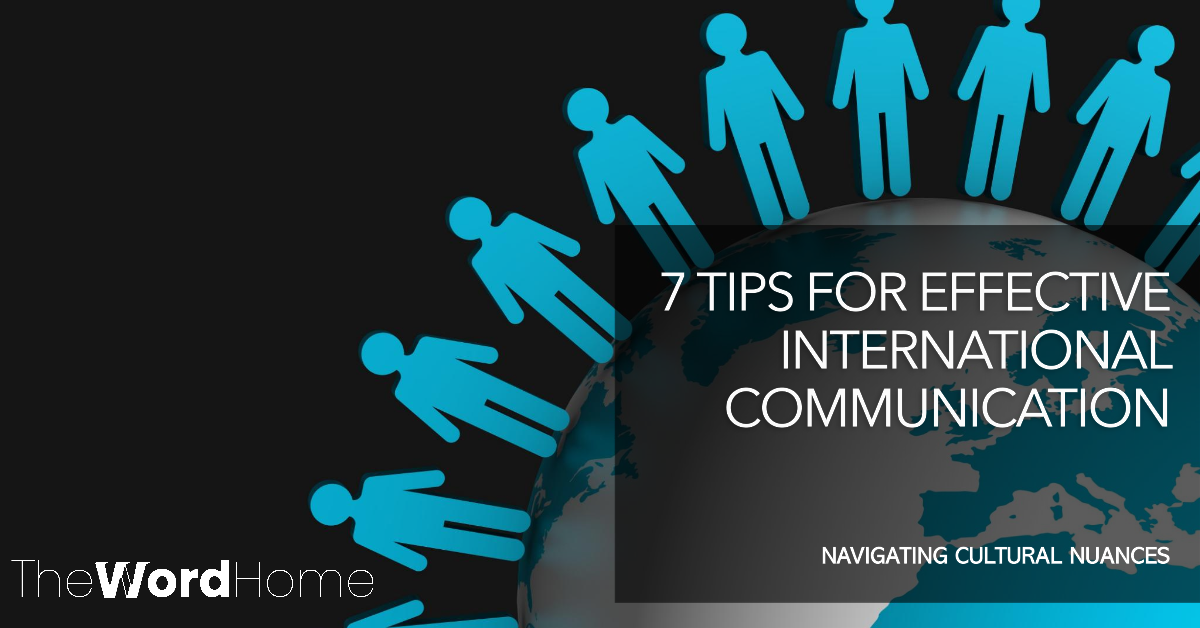Outline of the Article:
- Introduction
- Understanding the Significance of Cultural Nuances
- Verbal Communication
- Non-verbal Communication
- Decision-making
- Time Perception
- Benefits of Understanding Cultural Nuances
- Building Trust and Compatibility
- Error Avoidance
- Enhanced Collaboration
- Competitive Edge
- Practical Tips for Effective Worldwide Communication
- Participate in Social Awareness Training
- Practice Active Listening
- Be Mindful of Non-Verbal Communication
- Use Clear and Concise Language
- Be Patient and Considerate
- Utilize Technology
- Encourage Feedback and Open Communication
- Conclusion
In today’s globalized world, businesses and organizations are progressively connecting with people and entities from different social backgrounds. Successful worldwide communication, in this manner, has gotten to be a basic ability for victory within the worldwide commercial center. In any case, exploring social subtleties can be challenging, and indeed minor slips can lead to errors, harmed connections, and missed openings.
This article gives profitable insights and down to earth tips to assist businesses and organizations explore the complexities of intercultural communication and cultivate fruitful worldwide collaborations.
Understanding the Significance of Cultural Nuances
Cultural Nuances include the subtle, unwritten rules, values, and behaviors that shape how individuals from different backgrounds connect, communicate, and translate data. These subtleties can show in different perspectives, counting:

- Verbal communication: This incorporates contrasts in communication styles, utilizes humor, and the significance put on unequivocality versus implicitness in messages.
- Non-verbal communication: This includes body dialect, signals, facial expressions, and individual space, all of which can hold different meanings over societies.
- Decision-making: Social contrasts can impact how choices are made, the level of pecking order and specialist included, and the favored approach to struggle determination.
- Time perception: Societies may have changing attitudes towards reliability and due dates, which can affect planning and venture administration in universal settings.
By understanding and increasing in value these social varieties, businesses and organizations can:
- Construct belief and compatibility: Illustrating social affectability cultivates belief and makes an establishment for positive working connections.
- Avoid errors: Recognizing social contrasts makes a difference to prevent misinterpretations and communication breakdowns.
- Upgrade collaboration: Successful communication over societies is significant for effective collaboration in worldwide groups and projects.
- Pick up a competitive edge: Businesses that exceed expectations at intercultural communication can pick up a critical advantage within the worldwide advertisement.
Practical Tips for Effective Worldwide Communication

Here are some noteworthy tips to assist businesses and organizations progress their worldwide communication:
1. Contribute in Social Mindfulness Preparing:
- Give representatives with preparing programs that prepare them with information and sensitivity towards distinctive cultures.
- Energize workers to memorize essential expressions within the dialects of their worldwide partners.
2. Practice Active Listening:
- Pay near consideration to both verbal and non-verbal signals to get the complete meaning of messages.
- Avoid interrupting and permit speakers to express themselves completely.
Inquire clarifying questions to guarantee understanding and maintain a strategic distance from presumptions.
3. Be Careful of Non-Verbal Communication:
- Be mindful of the social intentions related with signals, body dialect, and facial expressions.
- Keep up appropriate eye contact and avoid crossing your arms, which can be seen as dismissive in certain societies.
4. Utilize Clear and Brief Language:
- Maintain a strategic distance from utilizing figures of speech, slang, or language that will not be generally caught on.
- Talk gradually and articulate clearly.
- In the event that essential, summarizing or rethinking complex statements to guarantee clarity.
5. Be Quiet and Conscious:
- Permit for additional time for communication, as social contrasts can affect the pace and fashion of interaction.
- Be quiet with distinctive communication styles and maintain a strategic distance from making judgments.
- Illustrate respect for social conventions and values.
6. Use Innovation:
- Utilize translation tools and communication stages that support real-time communication and collaboration over societies.
- Consider utilizing social experts or dialect specialists to bridge communication gaps in complex circumstances.
7. Energize Criticism and Open Communication:
- Make an environment where open communication and input are empowered, permitting people from different backgrounds to share their viewpoints and address any concerns usefully.
- Frequently request input from worldwide partners to distinguish regions for change and guarantee compelling communication.
Conclusion
Effective worldwide communication isn’t essentially approximately talking distinctive languages; it’s around understanding and regarding different social viewpoints. By joining these tips and cultivating a culture of social mindfulness, businesses and organizations can navigate the complexities of intercultural communication, construct more grounded connections, and achieve success within the global arena.
Keep in mind, viable communication could be a two-way road. By effectively listening, practicing compassion, and illustrating social affectability, you can bridge the gap and cultivate fruitful worldwide communication, eventually clearing the way for a more collaborative and prosperous worldwide future.


